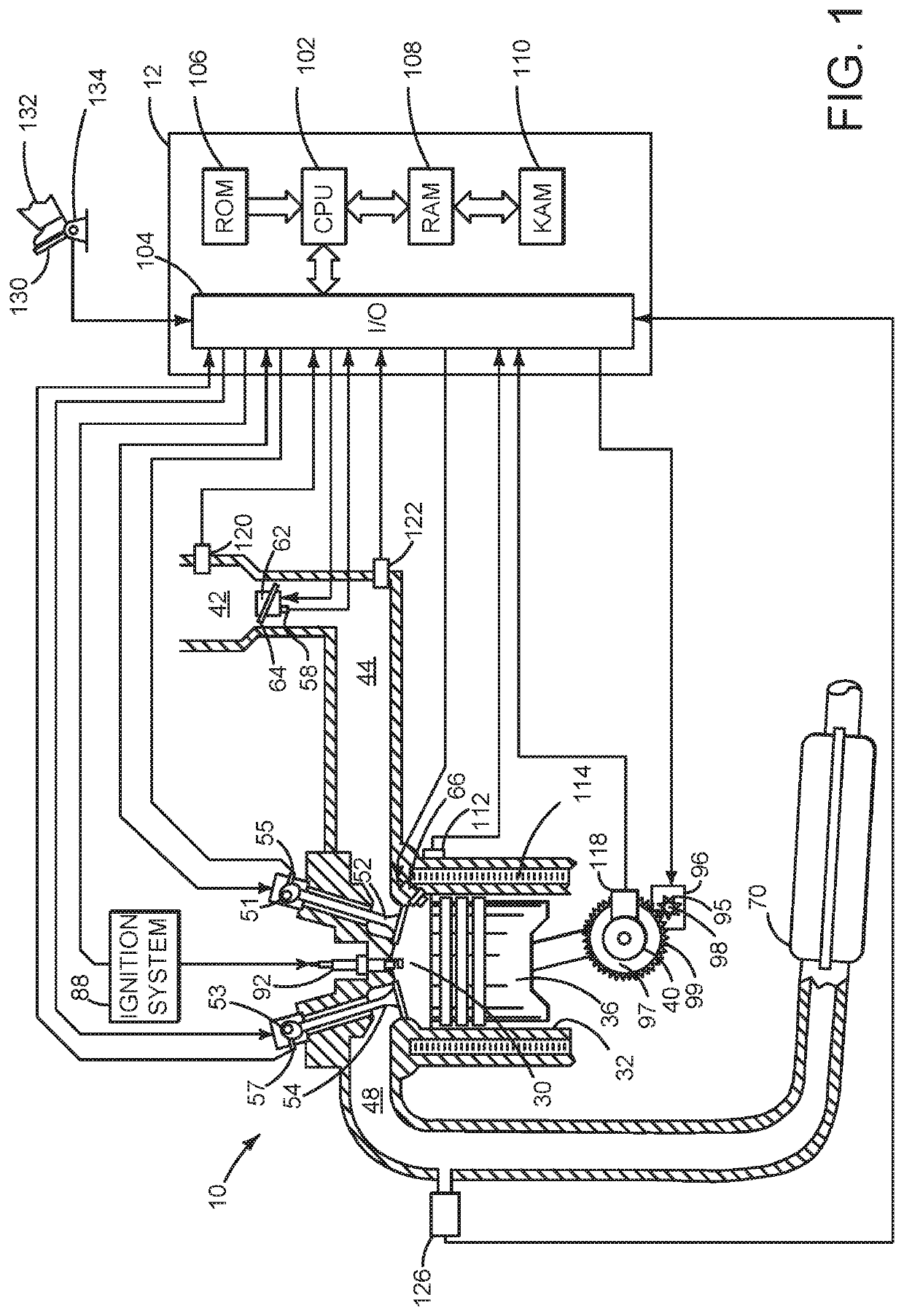Systems and methods for operating a hybrid vehicle with a manual shift transmission
a transmission and manual technology, applied in hybrid vehicles, vehicles, transportation and packaging, etc., can solve the problems of driveline torque disturbance, human driver may have to perform more operations, and it is difficult for some drivers to apply brake pedals and accelerator pedals with a single foot at the same time, so as to achieve the effect of reducing the disturbance of the driveline torque and performing more operations
- Summary
- Abstract
- Description
- Claims
- Application Information
AI Technical Summary
Benefits of technology
Problems solved by technology
Method used
Image
Examples
Embodiment Construction
[0015]The present description is related to operating a vehicle that includes an internal combustion engine, an electric machine, and a manual transmission. A controller may assist a human driver to smoothly shift the manual transmission so that driveline torque disturbances may be reduced and so that the human driver may concentrate on the vehicle's path of travel. The vehicle may include an engine as shown in FIG. 1. The engine may be mechanically coupled to driveline configuration as shown in FIG. 2. The vehicle may operate according to sequence shown in FIG. 3. The vehicle may include and operate according to the method of FIGS. 4 and 5. A controller block diagram for the vehicle of FIG. 2 is shown in FIG. 6.
[0016]Referring to FIG. 1, internal combustion engine 10, comprising a plurality of cylinders, one cylinder of which is shown in FIG. 1, is controlled by electronic engine controller 12. The controller 12 receives signals from the various sensors shown in FIGS. 1-3 and emplo...
PUM
 Login to View More
Login to View More Abstract
Description
Claims
Application Information
 Login to View More
Login to View More - R&D
- Intellectual Property
- Life Sciences
- Materials
- Tech Scout
- Unparalleled Data Quality
- Higher Quality Content
- 60% Fewer Hallucinations
Browse by: Latest US Patents, China's latest patents, Technical Efficacy Thesaurus, Application Domain, Technology Topic, Popular Technical Reports.
© 2025 PatSnap. All rights reserved.Legal|Privacy policy|Modern Slavery Act Transparency Statement|Sitemap|About US| Contact US: help@patsnap.com



